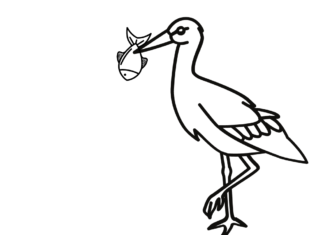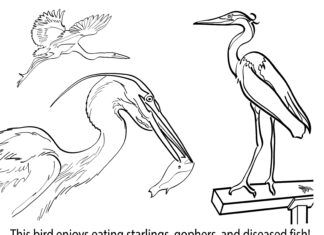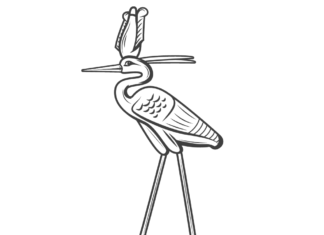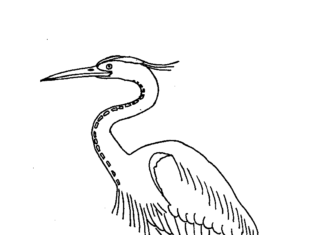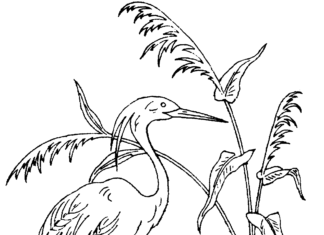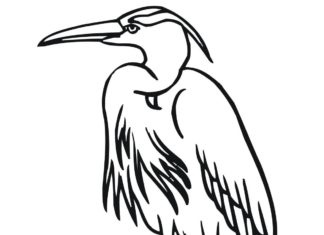In this section we meet two birds simultaneously. They are very similar to each other in construction, which makes it difficult to distinguish them from each other. The crane has a very erect body and is larger even than the stork. Its plumage is ashen and the tips of its wings are black. In warmer weather when summer comes the top of its body turns brown from rubbing mud.
Coloring Book The Crane and the Heron
information
Crane
- Species: There are about 15 different species of crane, including the gray crane, also known as the European crane.
- Size: Cranes are larger than herons, with some species reaching up to 120 cm in height.
- Occurrence: Cranes inhabit various parts of the world, from North America to Europe and Asia.
- Long necks and legs: Cranes have long, straight necks and long legs, which gives them a unique silhouette.
- Behavior: They are known for their spectacular mating behavior, which includes elaborate dancing and making loud sounds.
- Diet: Cranes are versatile omnivores that feed on both plants and small animals.
Heron
- Species: There are more than 60 species of herons, including the popular gray heron.
- Size: Herons are usually slightly smaller than cranes, although sizes can vary depending on the species.
- Occurrence: Herons can be found almost all over the world, except in Antarctica.
- Distinctive Silhouette: Herons often walk with their necks bent, which distinguishes them from cranes.
- Diet: Herons are usually aquatic birds that feed on fish, frogs and other aquatic animals.
- Nesting: Herons often build large and elaborate nests in trees, often in colonies.
trivia
- Mating behavior: Cranes are known for their spectacular mating dance. A pair of cranes performs intricate sequences of leaps, turns and winged positions during courtship.
- Life expectancy: Cranes are among the longest-lived wild birds, with some individuals reaching up to 30 years of age in the wild.
- Heron habitats: Although most herons prefer wet environments such as marshes and rivers, some species, such as the desert heron, can live in dry habitats.
- The voice of the heron: Gray herons are known for their distinctive cawing sound, which can often be heard during their flight.
- Migrations: Some crane species, such as the gray crane, are known for their long migrations. Gray cranes migrate from northern Europe and Asia to Africa and the Middle East for the winter.
- Nests on the ground: Unlike herons, which build their nests in trees, most cranes build their nests on the ground, often in wetlands.
- Heron and culture: In many cultures, the heron is a symbol of vigilance and patience because of their hunting method of waiting a long time for prey.
- Long beak: Herons have long, sharply pointed beaks that are ideal for grabbing fish and other small animals.
- Cranes in culture: In many Asian cultures, especially in Japan and China, cranes are considered symbols of longevity and prosperity.
- Security: Both cranes and herons are threatened by habitat loss. Many volunteers and organizations are working to protect these birds, creating reserves and educating people about their importance.

